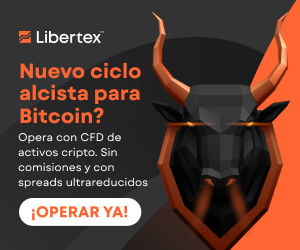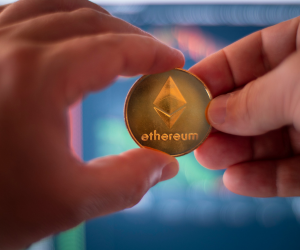Learn what network fees in cryptocurrencies are, why they fluctuate, how to reduce costs, and discover platforms with the lowest fees. An essential guide for traders looking to optimize their transactions.

Why Crypto Fees Vary
Network fees in cryptocurrencies are costs associated with making transactions on a blockchain. These fees compensate miners or validators who process and verify transactions. However, not all fees are the same, and they can vary significantly depending on several factors. Understanding why these variations occur is crucial for traders looking to optimize their costs.
Network Congestion
One of the main reasons network fees fluctuate is congestion. When there is a high volume of transactions, the demand for space in the blocks increases, raising the fees.
Transaction Size
The size in bytes of a transaction also influences the fee. More complex transactions or those involving multiple inputs and outputs consume more space in the block, increasing the cost.
Simplifying your transactions can help you reduce unnecessary fees.
Transaction Priority
Miners often prioritize transactions with higher fees. If you need your transaction to be confirmed quickly, you may need to pay a higher fee.
If you're not in a hurry, you can set a lower fee and wait for the network to be less congested.
Type of Cryptocurrency
Each blockchain has its own fee mechanism. For example, fees in Bitcoin are calculated in satoshis per byte, while Ethereum uses gas units.
Comparison:
Bitcoin: Relatively stable fees but can increase during demand peaks.
Ethereum: More susceptible to drastic variations due to smart contracts and DeFi applications.
Network Upgrades and Improvements
Protocol upgrades can affect fees. For example, the implementation of Ethereum 2.0 aims to reduce fees through a change in consensus mechanism and scalability improvements.
Staying informed about these upgrades can help you plan your transactions and take advantage of periods of lower fees.
Market Events and Speculation
News and significant events can trigger fee increases due to a surge in trading activity.
How to Minimize Transaction Costs
Reducing network fees is a priority for many traders, especially those who make multiple daily transactions. Below, we explore strategies and practical tips to minimize these costs and improve your profitability.
Use Low Congestion Times
Fees are usually lower when the network is less congested. Identifying and operating during these periods can save you a significant amount in fees.
Tools like Etherscan Gas Tracker allow you to monitor fees in real time and plan your transactions accordingly.
Manually Adjust Fees
Many wallets and exchanges allow you to manually set the fee you are willing to pay. By adjusting the fee, you can balance between cost and confirmation speed.
If you don't need an immediate confirmation, you can set a lower fee and wait for the transaction to be processed.
Use Cryptocurrencies with Low Fees
Some cryptocurrencies offer significantly lower transaction fees than Bitcoin or Ethereum.
Options:
Litecoin (LTC): Lower fees and quick confirmations.
Ripple (XRP): Designed for fast and affordable transactions.
Cardano (ADA): Offers a scalable platform with minimal fees.
Bundle Your Transactions
If you make frequent payments, consider bundling them into a single transaction to reduce the number of fees you pay.
Use Exchanges with Reduced Fees
Some exchanges offer lower fees or even eliminate network fees when operating within their platform.
Research and choose exchanges that offer competitive fees and promotions to reduce your costs.
Consider Layer 2 Solutions
Layer 2 solutions, such as Lightning Network for Bitcoin or Polygon for Ethereum, allow for fast and economical transactions off the main chain.
Benefits:
Lower Fees: Transactions at a fraction of the cost on the main chain.
Speed: Near-instant confirmations.
Use Efficient Wallets
Some wallets are optimized to reduce fees by consolidating inputs and managing transactions efficiently.
Wallets like Exodus or Electrum offer advanced options for managing fees.
Platforms with More Competitive Fees
Choosing the right platform can make a big difference in the fees you pay when trading cryptocurrencies. Below, we present some of the most competitive platforms in terms of costs, along with their key features.
Binance
Binance is one of the largest and most popular exchanges in the world, known for its low fees and wide variety of cryptocurrencies.
Features:
Base fee: 0.1% per trade.
Discounts: Up to 25% discount if you use BNB, its native token.
Withdrawal: Competitive and market-adjusted withdrawal fees.
Kraken
Kraken is known for its security and competitive fees, especially for high-volume traders.
Features:
Maker/taker fee: From 0.16% for makers and 0.26% for takers, with volume discounts.
Variety of cryptocurrencies: Offers a wide range of digital assets.
Coinbase Pro
Coinbase Pro is the advanced version of Coinbase, aimed at traders looking for lower fees and advanced tools.
Features:
Tiered fees: Start at 0.5% and decrease with higher trading volume.
Security: High standard of security and regulatory compliance.
KuCoin
KuCoin offers competitive fees and a wide selection of cryptocurrencies, including many emerging altcoins.
Features:
Base fee: 0.1% per trade.
Discounts: Option to reduce fees by using its native token, KCS.
Bitstamp
Bitstamp is one of the oldest and most reputable exchanges, with competitive fees and an easy-to-use interface.
Features:
Fees: Start at 0.5% and decrease with higher volume.
Reliability: Solid track record and strict regulatory compliance.
Strategies for Choosing a Platform
Compare fees: Review the fee structures of various platforms to find the most suitable one for you.
Consider security: Low fees aren't worth it if the platform isn't secure.
Check reputation: Read reviews and testimonials from other users to assess reliability.







